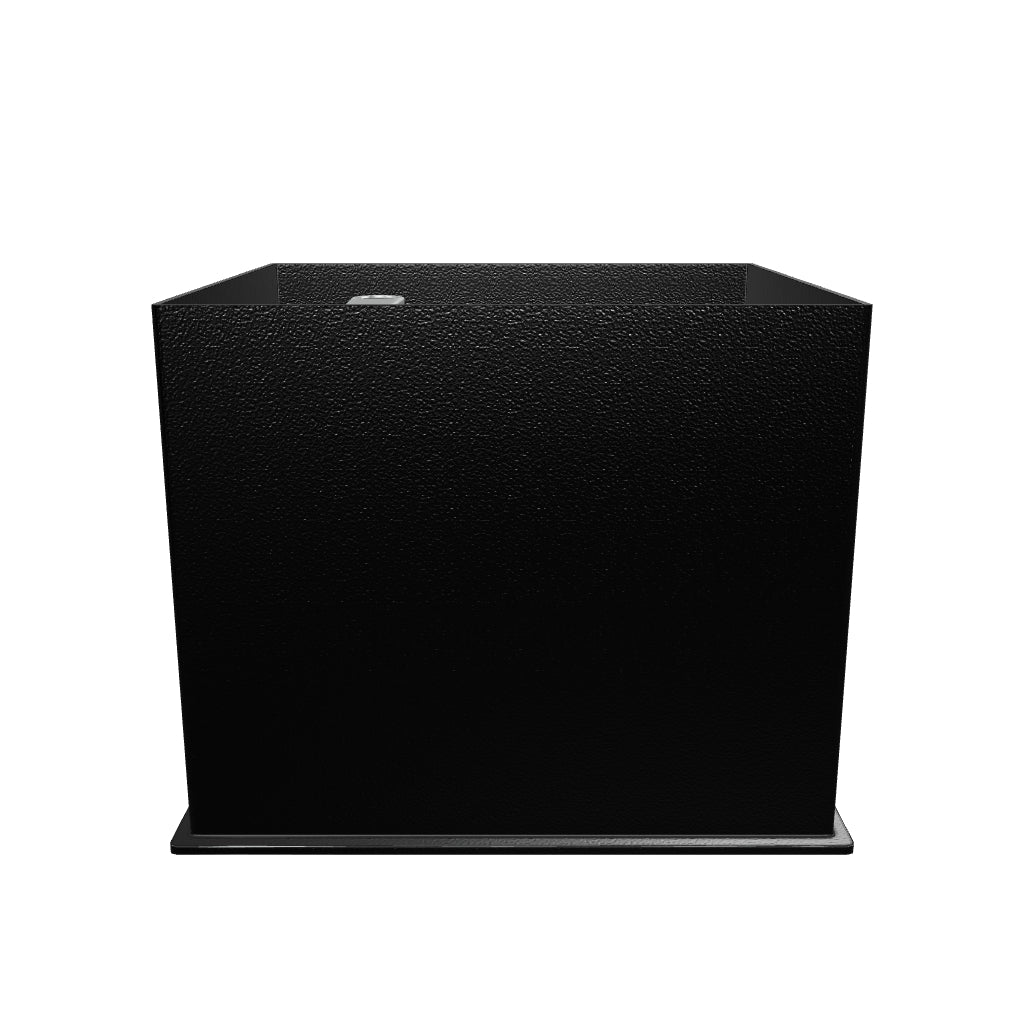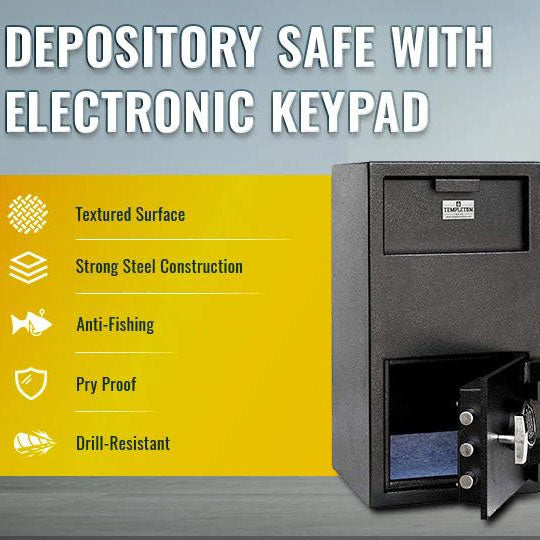Urgent Care Centers and Disaster Preparedness: The Templeton Safe Solution
In today's unpredictable world, disaster preparedness is more important than ever for urgent care centers. From natural disasters like hurricanes and earthquakes to man-made emergencies like power outages or even theft, urgent care facilities need to ensure that both patient information and critical supplies are secure. One essential tool in any preparedness plan is having the right security safe. In this article, we’ll dive into how urgent care security safes can play a key role in disaster preparedness and the types of safes best suited for these medical environments.
Why Disaster Preparedness is Critical for Urgent Care Centers
Urgent care centers are often the first point of contact for patients in medical emergencies. They handle a high volume of patients, store sensitive information, and may hold critical medications and supplies. When disaster strikes, urgent care centers must be prepared to maintain operations, protect patients' medical records, and safeguard controlled substances.
The Rise of Natural Disasters and Unforeseen Emergencies
Natural disasters and unpredictable emergencies are on the rise. Events like hurricanes, floods, earthquakes, and even cyberattacks can bring down an entire healthcare system, making preparation crucial. For urgent care centers, which often operate outside of traditional hospital networks, this means having contingency plans to ensure patient care continues and that sensitive materials are protected.
Compliance with Healthcare Regulations
In addition to the immediate threats posed by disasters, urgent care centers are required to comply with strict healthcare regulations that demand the secure storage of medical records, medications, and equipment. Security breaches, whether through theft or natural disasters, can result in non-compliance, heavy fines, and even reputational damage.
That’s where urgent care security safes come in as a practical solution for both regulatory compliance and disaster preparedness.
The Role of Security Safes in Disaster Preparedness
Security safes are often overlooked when planning for disaster preparedness, but they are a crucial component in safeguarding an urgent care center’s most valuable assets. When choosing a safe, it’s important to consider not just security but also the types of disasters that are likely to affect your facility.
Protecting Medical Records and Patient Data
One of the most critical aspects of disaster preparedness is ensuring that patient records remain safe. These records, which contain personal health information (PHI), are sensitive and must be kept secure at all times to comply with HIPAA (Health Insurance Portability and Accountability Act) regulations.
A fireproof and waterproof safe ensures that even in the event of a flood, fire, or power outage, vital records are not lost. Urgent care security safes specifically designed for medical facilities can be equipped with compartments for both physical documents and digital backups.
Key Features to Look For:
- Fireproof protection for up to several hours.
- Waterproof seals to prevent flood damage.
- Locking mechanisms that are compliant with healthcare regulations.
Safeguarding Controlled Substances
Urgent care centers often stock controlled substances like pain medications, which must be stored securely to prevent theft or misuse. In the event of a disaster, the possibility of looting or break-ins becomes higher. Having a secure safe with tamper-proof locking mechanisms will help ensure these substances don’t fall into the wrong hands.
For urgent care centers, a biometric or time-delay lock may be ideal for added security, especially when access needs to be restricted to certain personnel. These safes provide a digital log of who accessed the safe and when, which is helpful for both security and compliance.
Top Security Features for Controlled Substance Safes:
- Biometric locking systems.
- Tamper alerts and time-delay locks.
- Secure mounting to prevent theft.
Storing Emergency Medical Supplies
In times of disaster, urgent care centers need access to emergency medical supplies such as first aid kits, PPE (personal protective equipment), and other essentials. Having these supplies secured in a safe not only prevents theft but also ensures that they remain accessible and in good condition even during emergencies.
Types of Urgent Care Security Safes
Different types of safes serve different purposes, and choosing the right one for your urgent care center will depend on your needs. Here’s a breakdown of the most common safes used in urgent care facilities and how they contribute to disaster preparedness:
1. Fireproof and Waterproof Safes
These safes are designed to withstand extreme temperatures and water exposure. They’re ideal for storing medical records, patient data, and critical documents that must remain intact during emergencies.
- Best For: Protecting paper records, digital media, and valuable documents from fire and water damage.
- Disaster Preparedness Role: Ensures that sensitive information is safe from natural disasters like floods or fires.
2. Controlled Substance Safes
These specialized safes are designed to securely store narcotics and other controlled substances in compliance with DEA (Drug Enforcement Administration) regulations. They often come with biometric or time-delay locks for extra security.
- Best For: Storing medications and preventing unauthorized access.
- Disaster Preparedness Role: Protects controlled substances from theft during emergencies.
3. Biometric Safes
Biometric safes use fingerprints or other unique identifiers to grant access. This adds a layer of security, making them ideal for environments where access to sensitive materials needs to be closely controlled.
- Best For: Limiting access to critical supplies and medications.
- Disaster Preparedness Role: Prevents unauthorized access, even in chaotic situations.
4. Mobile Safes
For urgent care centers that may need to evacuate during a disaster, mobile safes provide the flexibility to move critical supplies and documents quickly. These safes are designed for portability and security.
- Best For: Transporting emergency supplies during evacuations.
- Disaster Preparedness Role: Allows urgent care centers to remain operational while on the move.
How to Choose the Right Safe for Your Urgent Care Center
Selecting the right safe for disaster preparedness involves considering both the types of emergencies your center is likely to face and what you need to protect. Here are some key factors to keep in mind when choosing an urgent care security safe:
1. Size and Capacity
Make sure the safe has enough space to store all necessary materials, including medical records, controlled substances, and emergency supplies. However, the safe should also fit into your existing infrastructure without taking up too much space.
2. Fire and Water Protection
Consider the fireproof rating (usually measured in hours) and whether the safe is waterproof. For urgent care centers located in areas prone to flooding or wildfires, these features are especially important.
3. Locking Mechanisms
Choose a locking mechanism that suits your needs. Biometric and electronic locks are great for controlling access, while time-delay locks add extra security for controlled substances.
4. Mounting and Portability
For larger safes, secure mounting is essential to prevent theft. For mobile safes, portability and ease of transport should be prioritized.
Final Thoughts: Secure Your Urgent Care Center Today
Disaster preparedness should be a top priority for every urgent care center. From protecting patient records and controlled substances to securing emergency supplies, urgent care security safes play a vital role in keeping your facility operational and compliant during emergencies.
By investing in the right safes, you can not only protect your assets but also ensure that your center continues to provide essential medical care, no matter what disasters come your way.






























